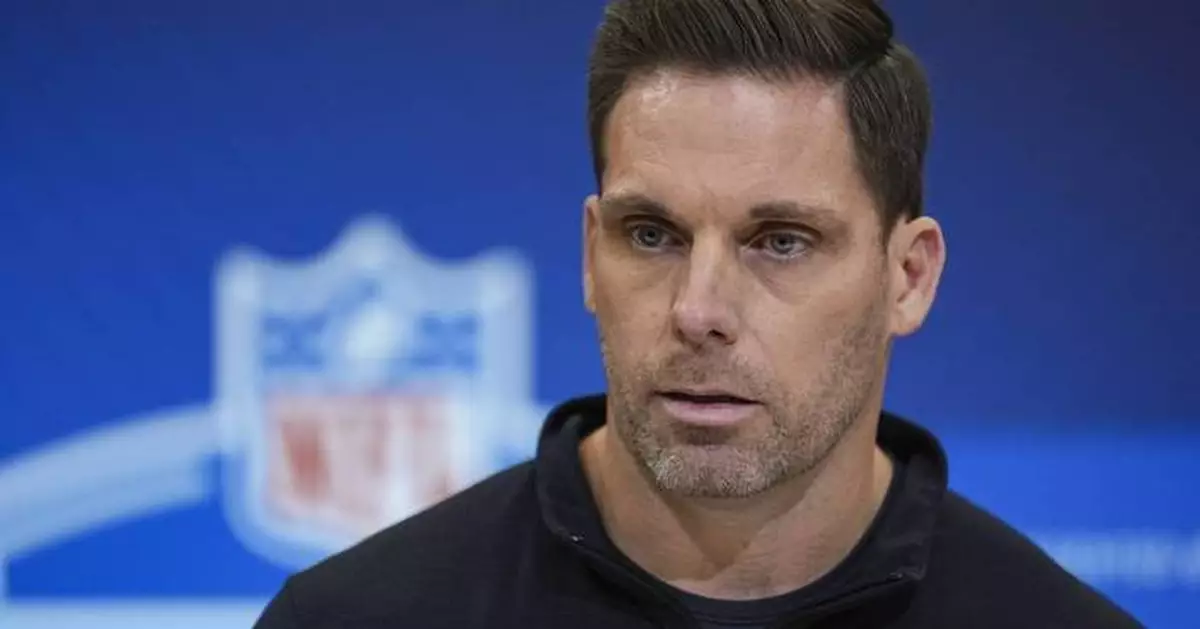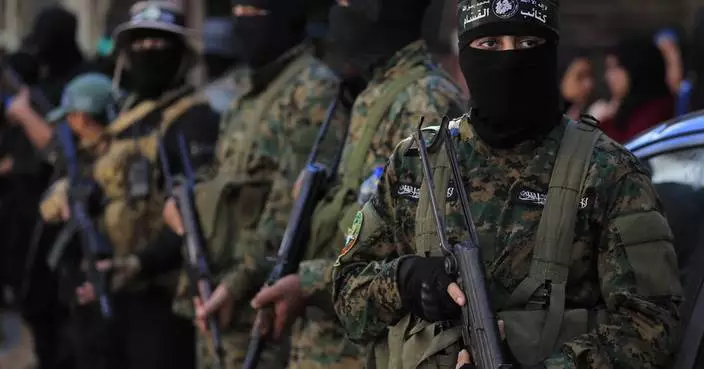CHARLOTTE, N.C. (AP) — The Carolina Panthers entered the offseason in dire need of upgrading the NFL’s worst defense.
General manager Dan Morgan aggressively attacked those shortcomings in the first few days of free agency, spending nearly a quarter-billion dollars of owner David Tepper’s money by signing defensive tackles Tershawn Wharton and Bobby Brown III, linebackers Pat Jones II and Christian Rozeboom, and safety Tre’Von Moehrig and re-signing cornerbacks Jaycee Horn and Mike Jackson.
The moves give the Panthers more flexibility entering the NFL draft, where they have the No. 8 overall pick.
So if Morgan wants to pivot from the team's obvious needs on the defense to take a wide receiver such as Arizona’s Tetairoa McMillan or Texas’ Matthew Golden, or fill a long-time team need at tight end with the likes of Michigan’s Colston Loveland he can.
That doesn't necessarily mean that will happen, even though the Panthers have spent their top two draft picks on offense the past two years.
Morgan, who will be overseeing his second draft in Carolina, knows the Panthers need as much depth as possible on defense after allowing a league-worst 31.4 points and 179.8 yards rushing per game in 2024.
That, and a slow start to the season for second-year quarterback Bryce Young, resulted in the Panthers finishing 5-12 and failing to make the postseason for the seventh straight season.
If the Panthers go defense, edge rusher Jalon Walker from Georgia could give their pass rush a needed boost.
Carolina had just 32 sacks last season, tied for third fewest in the league.
There could also be potential help available at linebacker with Alabama's Jihaad Campbell or cornerback with Texas' Jahdae Barron.
Don't be surprised if Morgan does a little wheeling and dealing on Day 2 of the draft.
The Panthers have one pick in both the second and third rounds on Friday night, but they also have two selections in the fourth round and three in the fifth, which could enable Morgan to package some picks and move back up into the second or third rounds.
Morgan made it clear at the NFL combine that the Panthers need to improve up front on both sides of the ball — not unlike the Super Bowl champion Philadelphia Eagles.
Carolina invested more big money in guards Robert Hunt and Damien Lewis in 2024 and re-signed center Austin Corbett earlier this offseason to shore up the offensive line. The defensive line, even with the free agent additions, is an area the Panthers may look to improve in the draft.
“You have to win the line of scrimmage," Morgan said. “You have to be bigger, you have to be tougher, you have to be more physical — and that’s what we’re looking to do around here. We’re looking to build that defensive line like we built the offensive line last season. Give the fans a good product on the field, give us a good product on the field."
Edge rusher, cornerback and linebacker are all areas of need on defense, while wide receiver and tight end could be targets on offense.
The Panthers seem content with the maturation and growth of Young and they re-signed veteran Andy Dalton, so quarterback is off the table. Running back is also not an area of need either after signing free agent Rico Dowdle from the Dallas Cowboys to back up Chuba Hubbard. Also last year's second-round pick Jonathan Brooks is expected back midseason after a knee injury. The starting offensive line appears set, although the team could look for an eventual replacement for left tackle.
The Panthers seem enamored with Walker, a 6-foot-1, 243-pound edge rusher who would bring versatility to the team's 3-4 defensive scheme.
AP NFL: https://apnews.com/hub/nfl
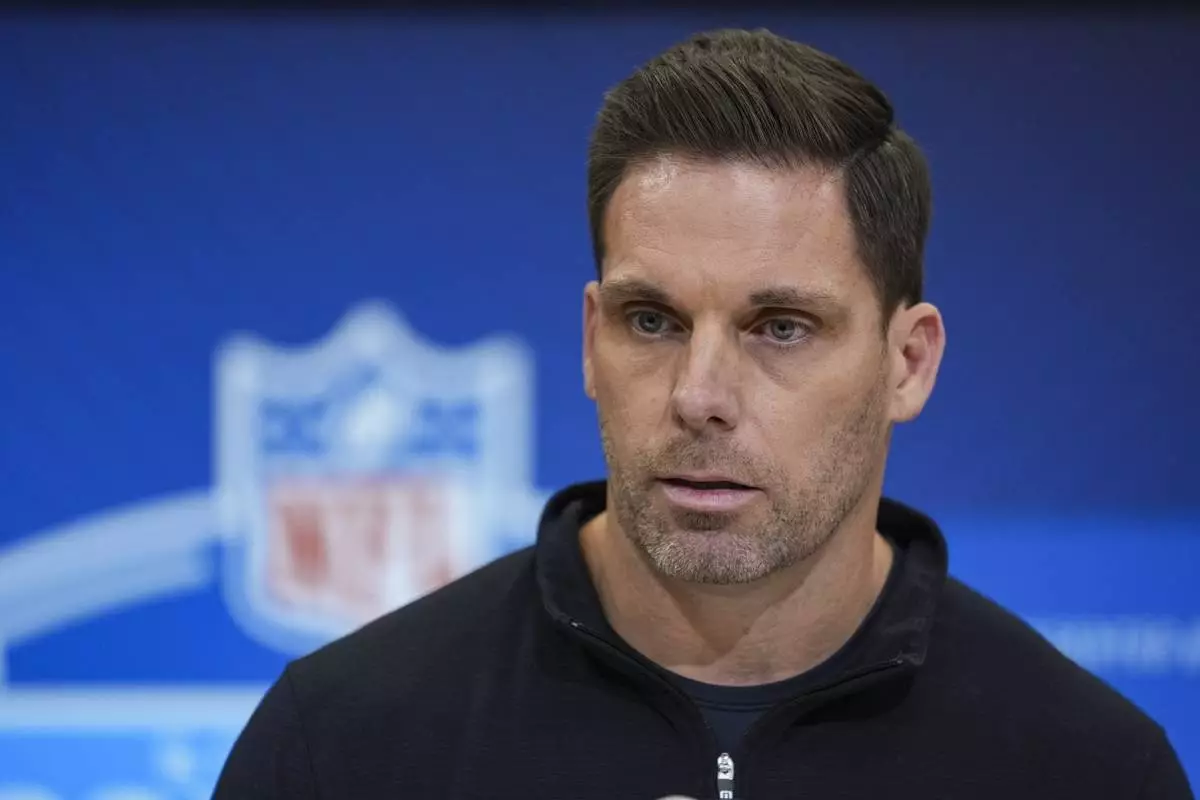
FILE - Carolina Panthers general manager Dan Morgan speaks during a press conference at the NFL football scouting combine in Indianapolis, Tuesday, Feb. 25, 2025. (AP Photo/Michael Conroy, File)
MINNEAPOLIS (AP) — Right after Sunday worship at St. Paul’s-San Pablo Lutheran Church, Juan Carlos Toapanta lay in a lounge chair set up by the altar, needles sticking out of his forehead, wrist and foot for an hourlong acupuncture session.
“Just like the Lord’s light helps emotionally, the body’s pain is treated as well,” said the Ecuadorian construction worker, who suffers from sciatica and has worshipped at the Minneapolis church for about five months. “Everything feels freed, emotionally.”
Founded by Swedish immigrants in the late 19th century, the church is now a predominantly Latino congregation. Like most other churches in the U.S. that serve migrants, it has expanded its humanitarian, financial, legal and pastoral ministries during the Trump administration’s immigration crackdown.
It has also added monthly well-being sessions — at no charge — with acupuncture, Reiki and cupping therapy to ease the stress that uncertainty and fear have sown among the migrant community — including people in the U.S. illegally and U.S.-born citizens in mixed-status families.
“We have to feel well to respond well, not with panic and fear, which leads to nothing good,” said Lizete Vega, who has spearheaded the well-being efforts as the church’s Latino outreach coordinator. “People here feel that they’re protected and can be cared for spiritually, emotionally and physically.”
Faith leaders have increasingly found themselves called to help their congregations with mental health concerns, from chaplains in the U.S. Navy to pastors in the rural heartland.
Some see the need to provide reassurance and well-being as a growing part of their ministry to migrants, even as revised federal immigration guidelines now provide more leeway for enforcement in or near houses of worship.
“It was as if they were able to exhale a big breath,” the Rev. Hierald Osorto said of the 30 congregants who signed up for the first well-being session in March at St. Paul’s, where an outdoor mural features two traditional Swedish Dala horses between the Spanish words “sanación” (healing) and “resiliencia” (resilience).
After last Sunday’s worship, the altar table and Easter lilies were moved to make room for seven acupuncture chairs, arranged in a circle facing the central cross. Three massage tables were set up in front of the pews for the Reiki treatment, where practitioners hold their hands on or near the body’s energy centers.
“To see this space be quite literally a place of healing, in the place where we talk about it right at the altar, it moved me to tears,” Osorto said.
Wellness practitioners and mental health clinicians say anxiety and depression among those they serve in migrant communities have spread and intensified this year.
Already, migrants often arrive with severe trauma from violence they fled in their home countries as well as attacks along cartel-controlled routes to and through the U.S. border.
Women in particular often suffer sexual violence on the journey. For many, the fear that they or someone in their families might be deported is revictimizing. That makes it imperative that “safe places” exist where they can focus on wellness, said Noeline Maldonado, executive director of The Healing Center, which helps domestic and sexual violence victims in Brooklyn, New York.
Sessions that promote grounding and mindfulness are necessary to cope with the stress of both immediate crises as well as long-term unpredictability as immigration policies shift.
“Uncertainty is the biggest thing,” said Cheryl Aguilar, director of Hope Center for Wellness in the Washington, D.C., area, which has partnered with churches to provide mental health programs.
Being in community and cultivating hope is crucial because many people are responding to fear with rising anxiety, traumatic symptoms and isolation, all of which can have lasting consequences, Aguilar added.
“It’s nonstop work, nonstop fear,” said Sarah Howell, a clinical social worker in Houston with more than a decade of experience in migration-related trauma. “Every issue seems bigger.”
Howell said many of her clients in Texas are realizing they can’t live in a state of constant alarm, and the respite that wellness programs can bring becomes essential.
“People feel hopeless, but they have to keep fighting,” said Guadalupe Gonzalez, one of the bilingual Reiki practitioners whose organization, Odigo Wellness, partnered with St. Paul's in Minneapolis to offer the sessions.
She said she had some doubts about offering these healing practices inside a church — a large space with light flooding in and people moving through.
“But the sanctuary has a very nice, very positive energy,” Gonzalez said. “As practitioners we feel a lot of emotions.”
Several congregants who attended last Sunday’s two-hour wellness session said they felt both the energy and the connection between these healing practices and faith.
Martha Dominguez came bouncing down the altar steps after an acupuncture session. Grinning, she said she had never imagined a church would offer these kinds of “benefits.”
“Yes, it helps so much,” said the Mexican immigrant. “It takes the stress away from you.”
Limber Saliero, a roofer from Ecuador who has been worshipping at St. Paul’s for five years, said he had never heard of acupuncture but decided to try it.
“I felt like an energy that was flowing into me,” he said.
Vanessa Arcos tried acupuncture with her sister and her father, while her mother got a Reiki treatment. The family started attending the church the week they arrived in Minnesota from their home state of Guerrero, Mexico, almost a decade ago.
Lying in the lounge chair next to a statue of the Virgin of Guadalupe, Arcos said she overcame her fear of needles and found the treatment relaxing for both muscles and mind.
“It felt very peaceful, very safe,” Arcos said. “It’s important to do little things for yourself.”
Associated Press religion coverage receives support through the AP’s collaboration with The Conversation US, with funding from Lilly Endowment Inc. The AP is solely responsible for this content.
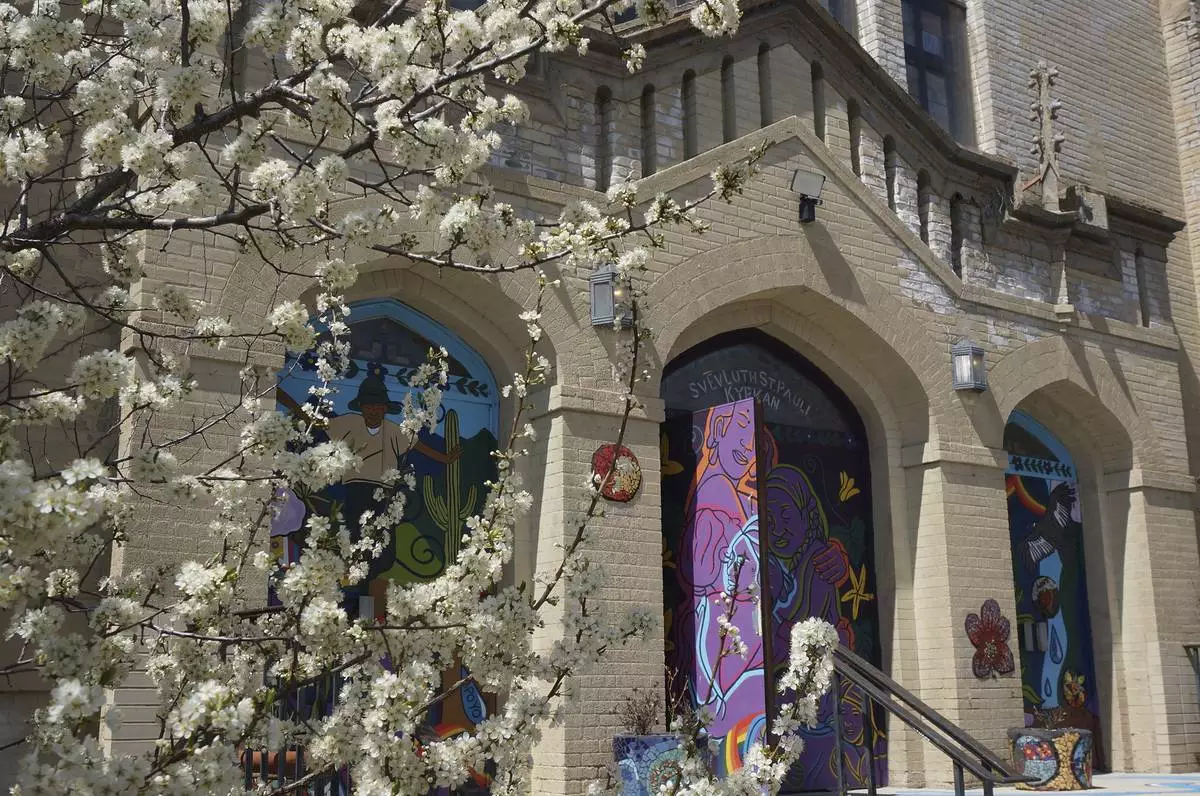
Spring blossoms bloom on a tree next to the entrance of St. Paul’s-San Pablo Lutheran Church, a congregation founded by Swedish immigrants in the late 19th century that has started offering wellness programs in its sanctuary as part of its migrant ministry, in Minneapolis, Sunday, April 27, 2025. (AP Photo/Giovanna Dell’Orto)
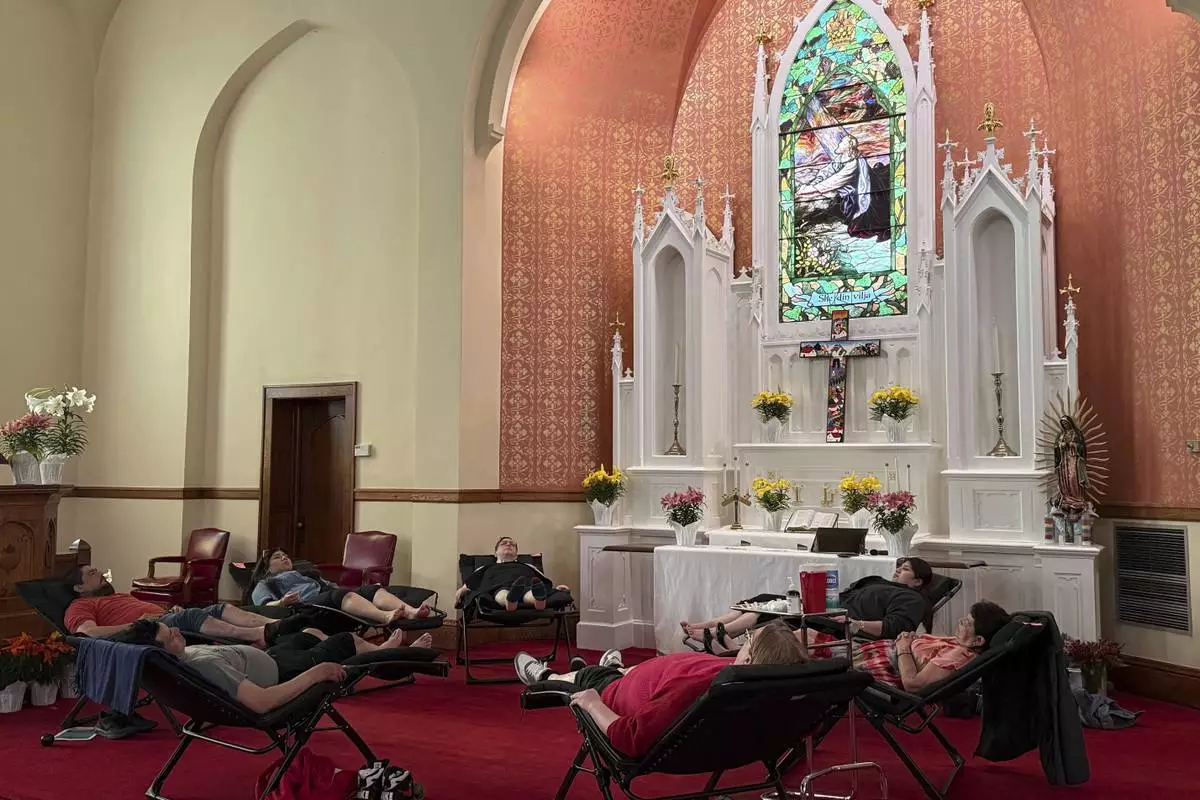
Congregants of St. Paul’s-San Pablo Lutheran Church receive acupuncture treatments in the sanctuary after worship during a wellness program the church started as part of its migrant ministry, in Minneapolis, Sunday, April 27, 2025. (AP Photo/Giovanna Dell’Orto)
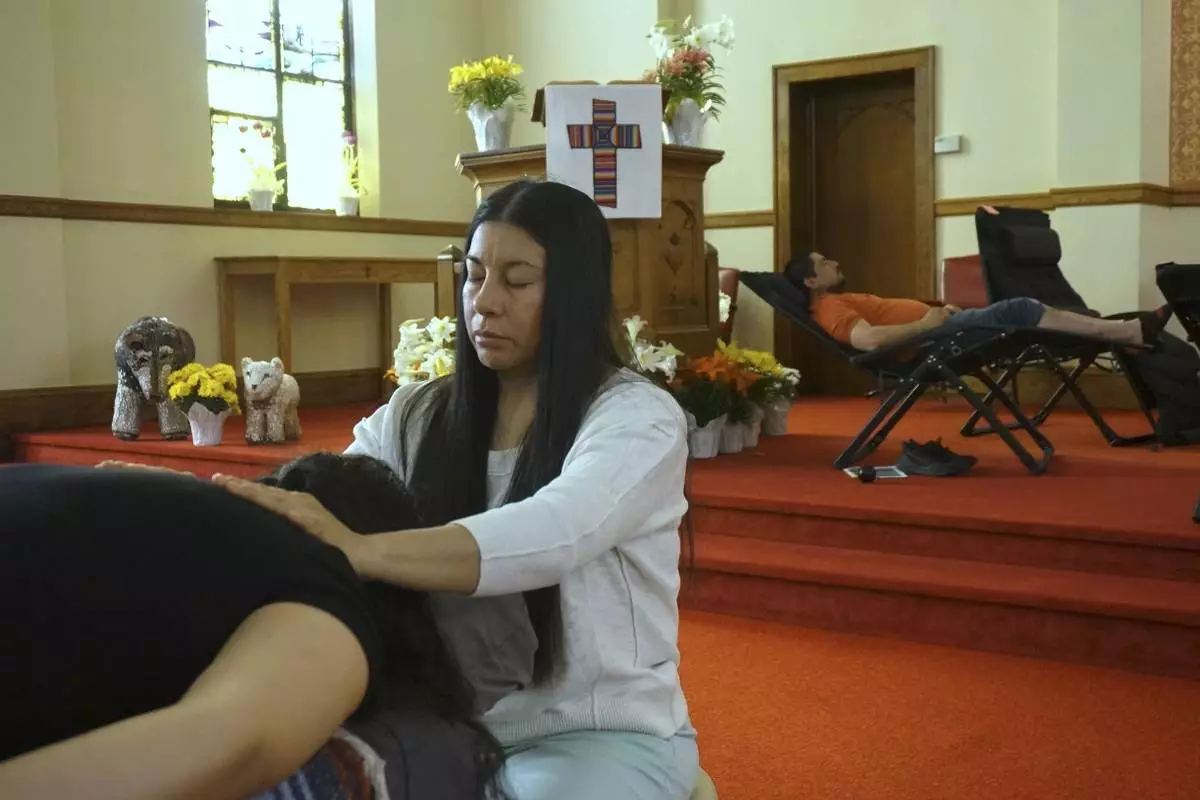
Guadalupe Gonzalez performs a Reiki treatment as Limber Saliero, background right, undergoes an acupuncture session in the sanctuary of St. Paul’s-San Pablo Lutheran Church, which recently added wellness programs as part of its migrant ministry, in Minneapolis, Sunday, April 27, 2025. (AP Photo/Giovanna Dell’Orto)
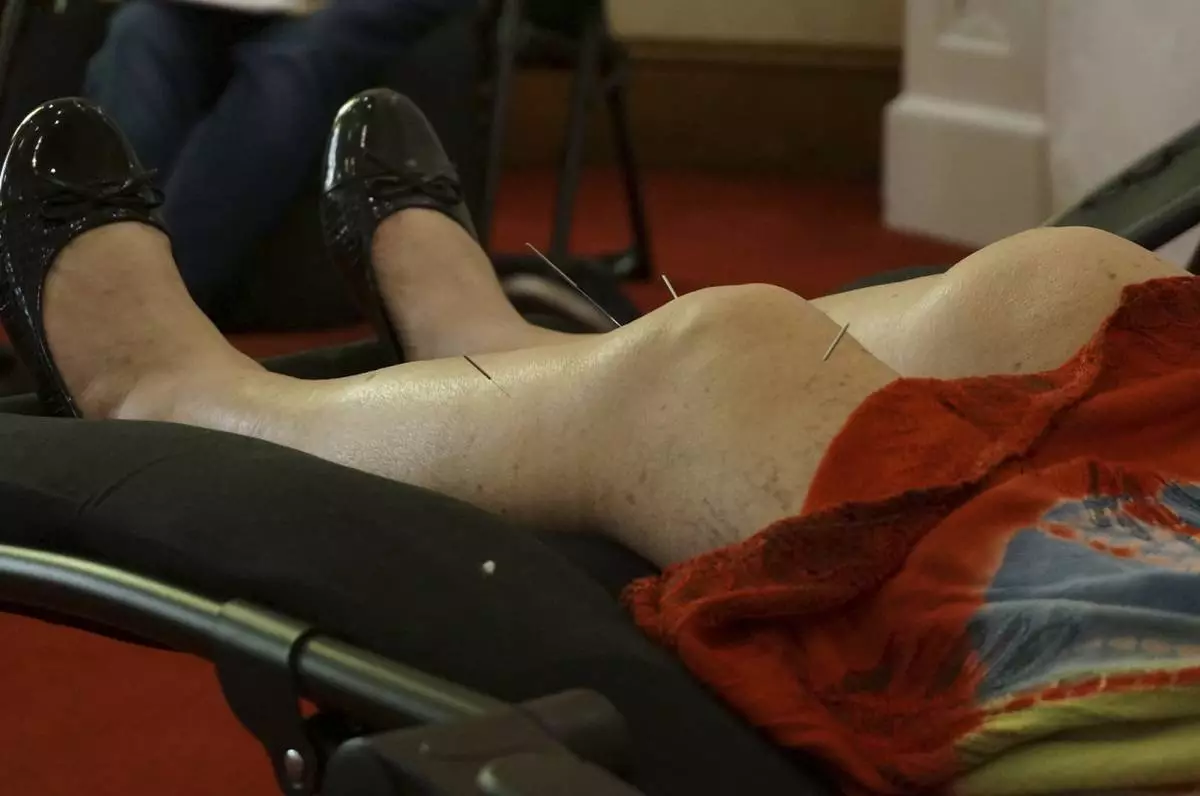
Martha Dominguez receives an acupuncture treatment in the sanctuary of St. Paul’s-San Pablo Lutheran Church, which recently added wellness sessions as part of its migrant ministry, in Minneapolis, Sunday, April 27, 2025. (AP Photo/Giovanna Dell’Orto)
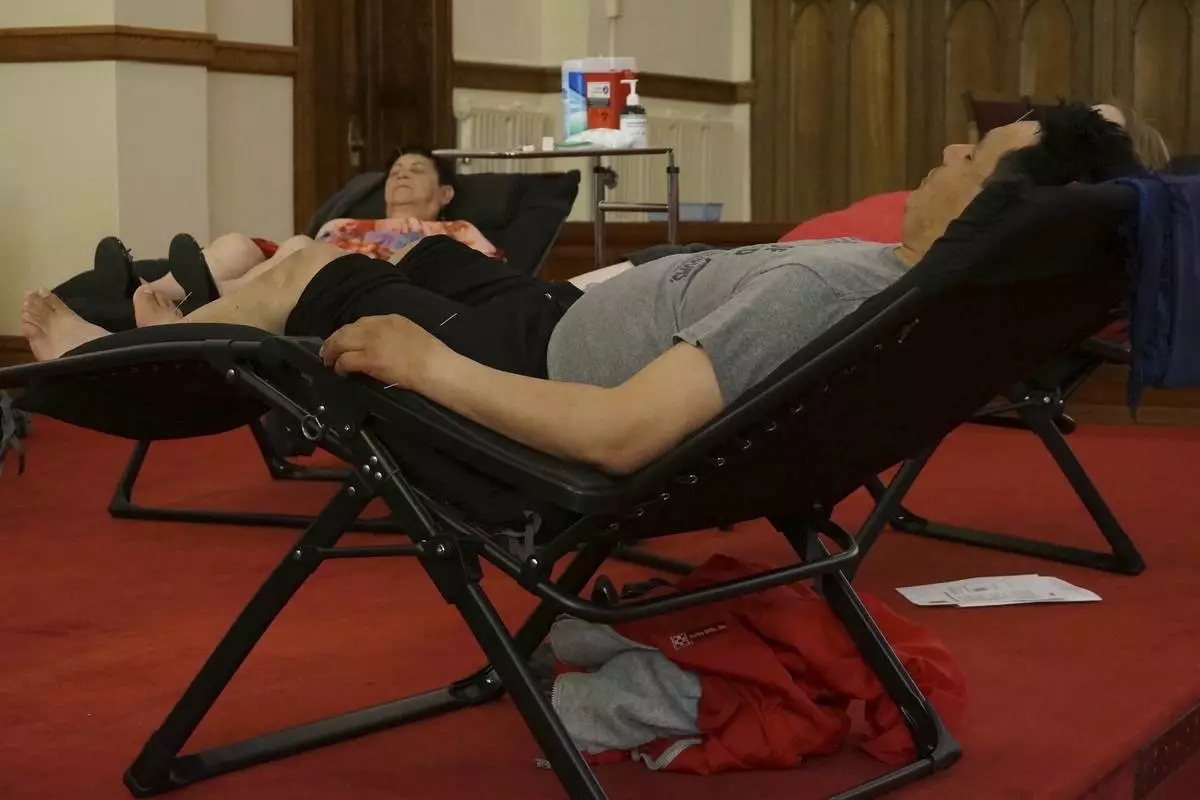
Juan Carlos Toapanta, foreground, and Martha Dominguez, background, receive acupuncture treatments in the sanctuary of St. Paul’s-San Pablo Lutheran Church, which recently added wellness sessions as part of its migrant ministry, in Minneapolis, Sunday, April 27, 2025. (AP Photo/Giovanna Dell’Orto)
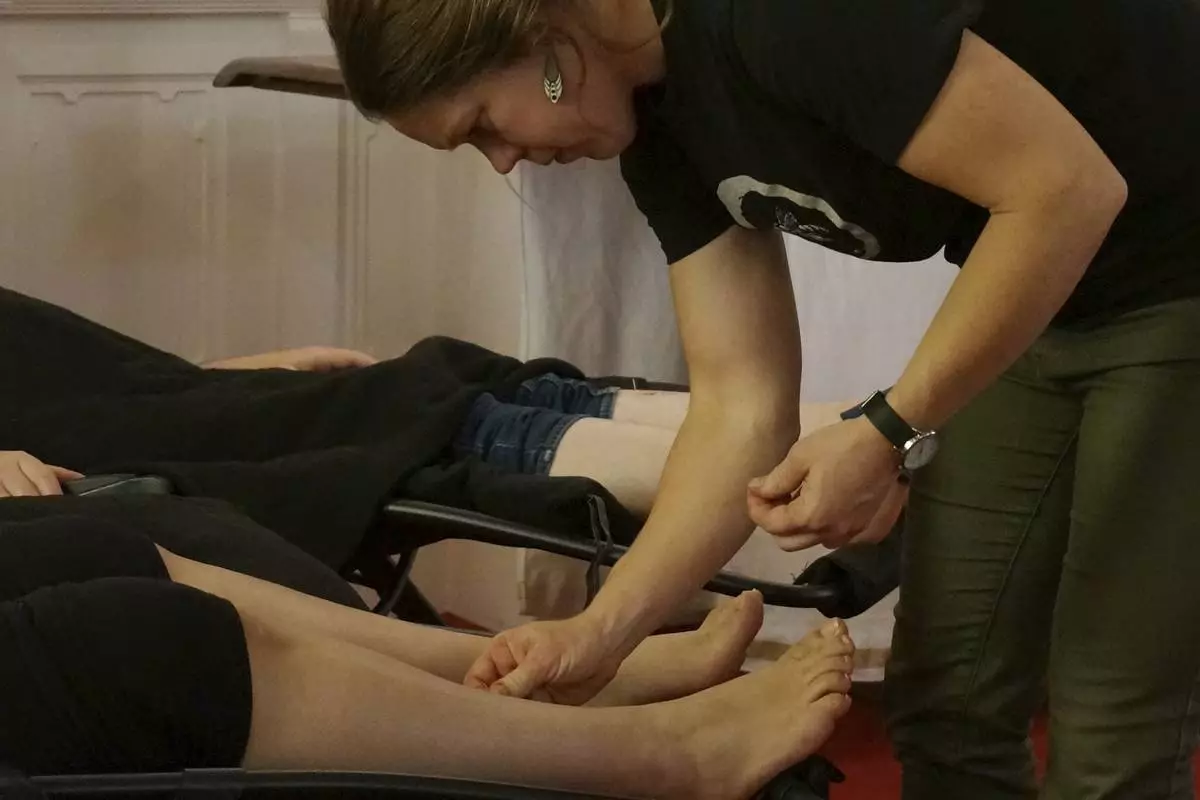
Acupuncturist Kahlyn Keilty-Lucas starts a treatment at St. Paul’s-San Pablo Lutheran Church, which holds wellness sessions after Sunday worship in the sanctuary as part of its migrant ministry, in Minneapolis, Sunday, April 27, 2025. (AP Photo/Giovanna Dell’Orto)
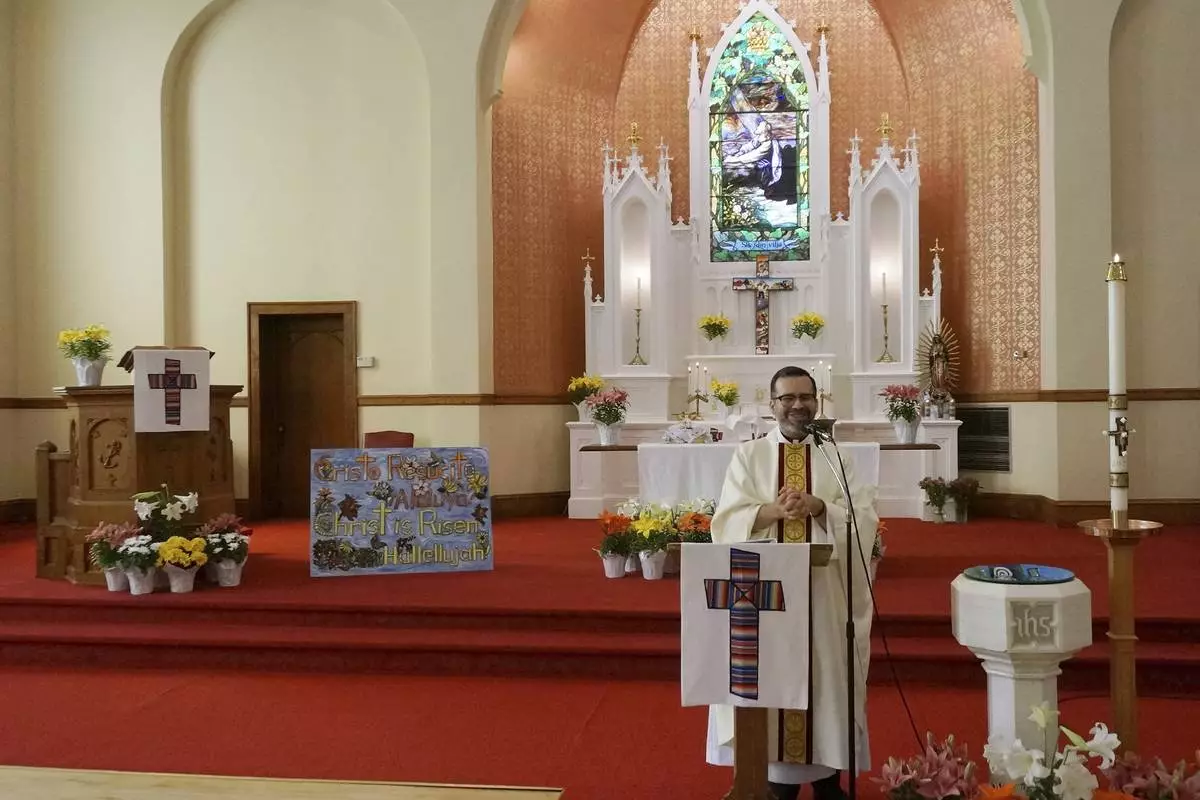
The Rev. Hierald Osorto speaks to the congregation of St. Paul’s-San Pablo Lutheran Church, which holds wellness sessions after Sunday worship in the sanctuary as part of its migrant ministry, in Minneapolis, Sunday, April 27, 2025. (AP Photo/Giovanna Dell’Orto)
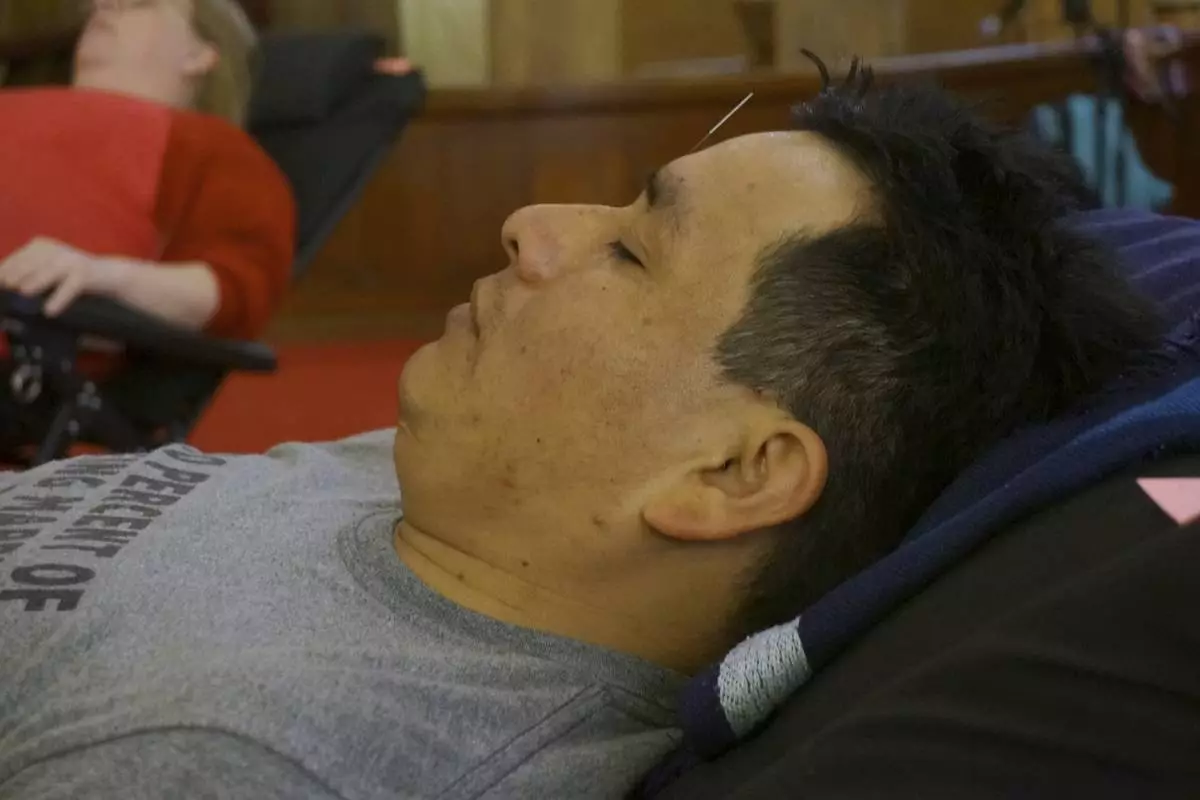
Juan Carlos Toapanta receives an acupuncture treatment in the sanctuary of St. Paul’s-San Pablo Lutheran Church, which recently added wellness sessions as part of its migrant ministry, in Minneapolis, Sunday, April 27, 2025. (AP Photo/Giovanna Dell’Orto)
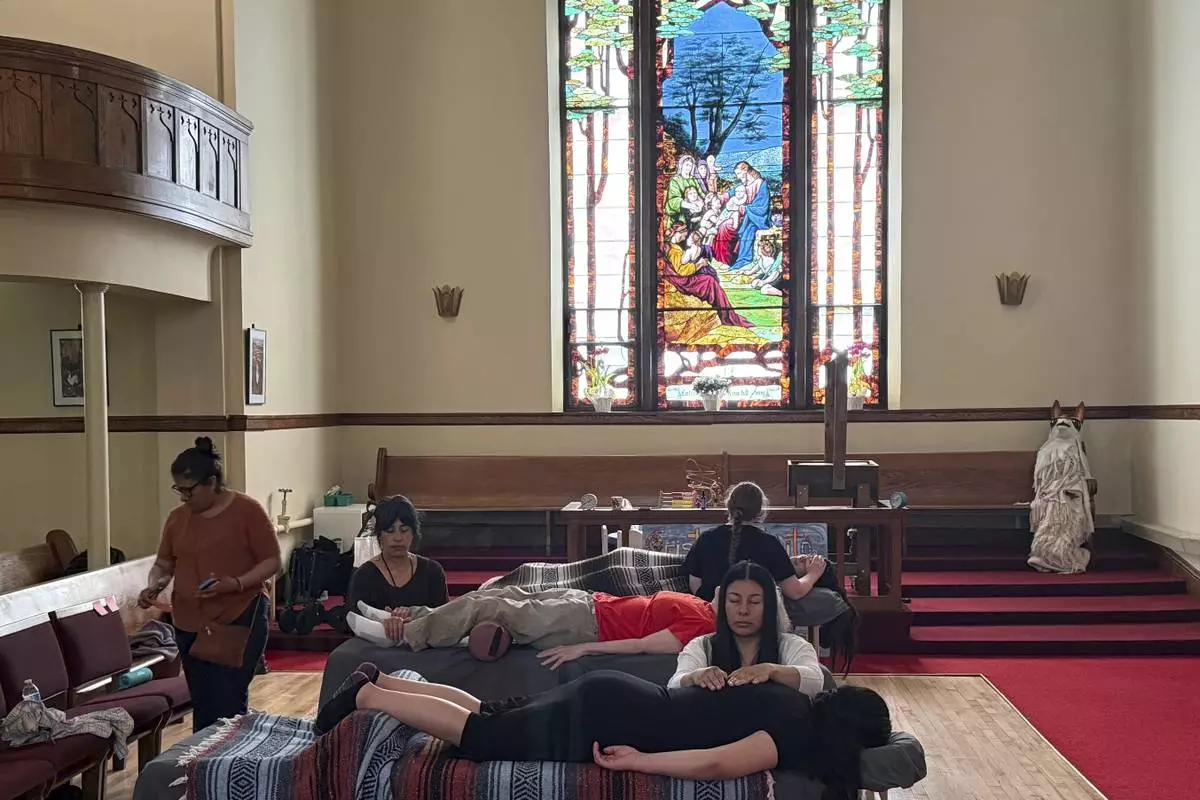
Guadalupe Gonzalez, foreground center, and two other practitioners perform Reiki treatments in the sanctuary of St. Paul’s-San Pablo Lutheran Church, where congregant Lizete Vega, left, helped organize wellness sessions as part of its migrant ministry, in Minneapolis, Sunday, April 27, 2025. (AP Photo/Giovanna Dell’Orto)
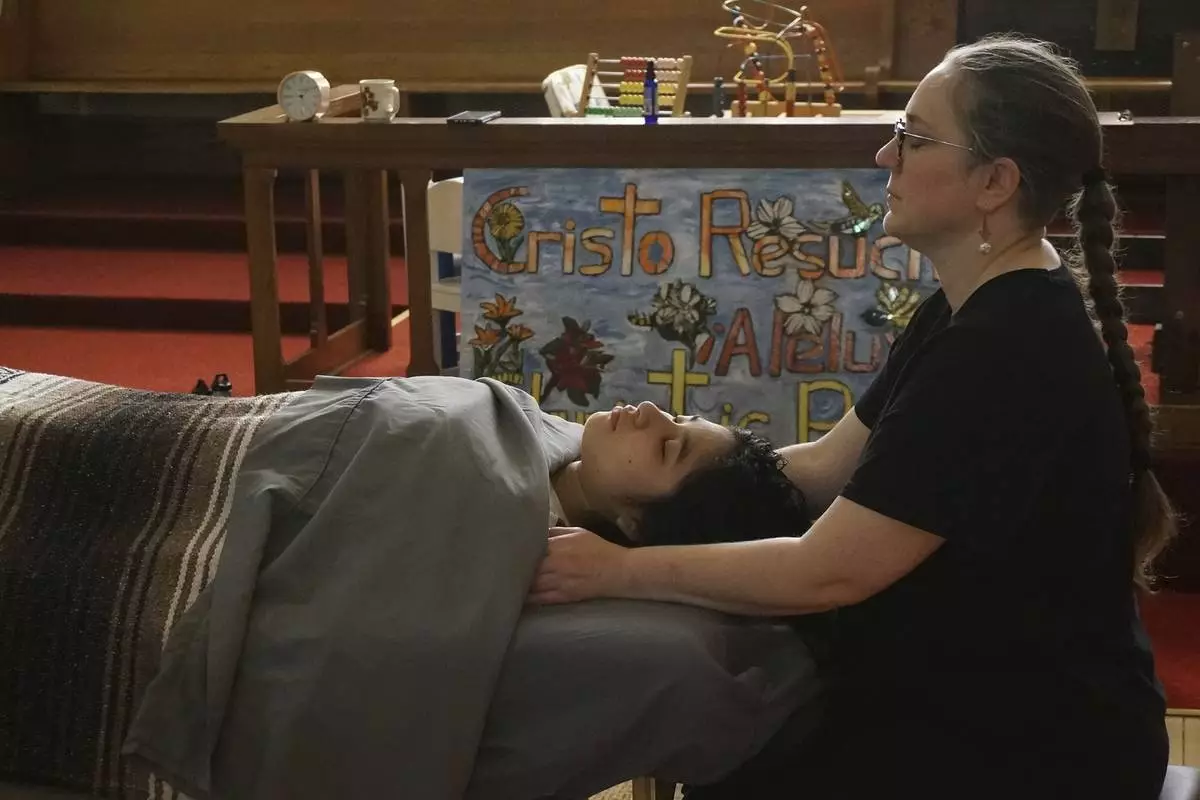
Marakah Mancini de León performs a Reiki treatment near a sign in Spanish reading, “Christ is risen,” in the sanctuary of St. Paul’s-San Pablo Lutheran Church, which recently added wellness sessions as part of its migrant ministry, in Minneapolis, Sunday, April 27, 2025. (AP Photo/Giovanna Dell’Orto)



